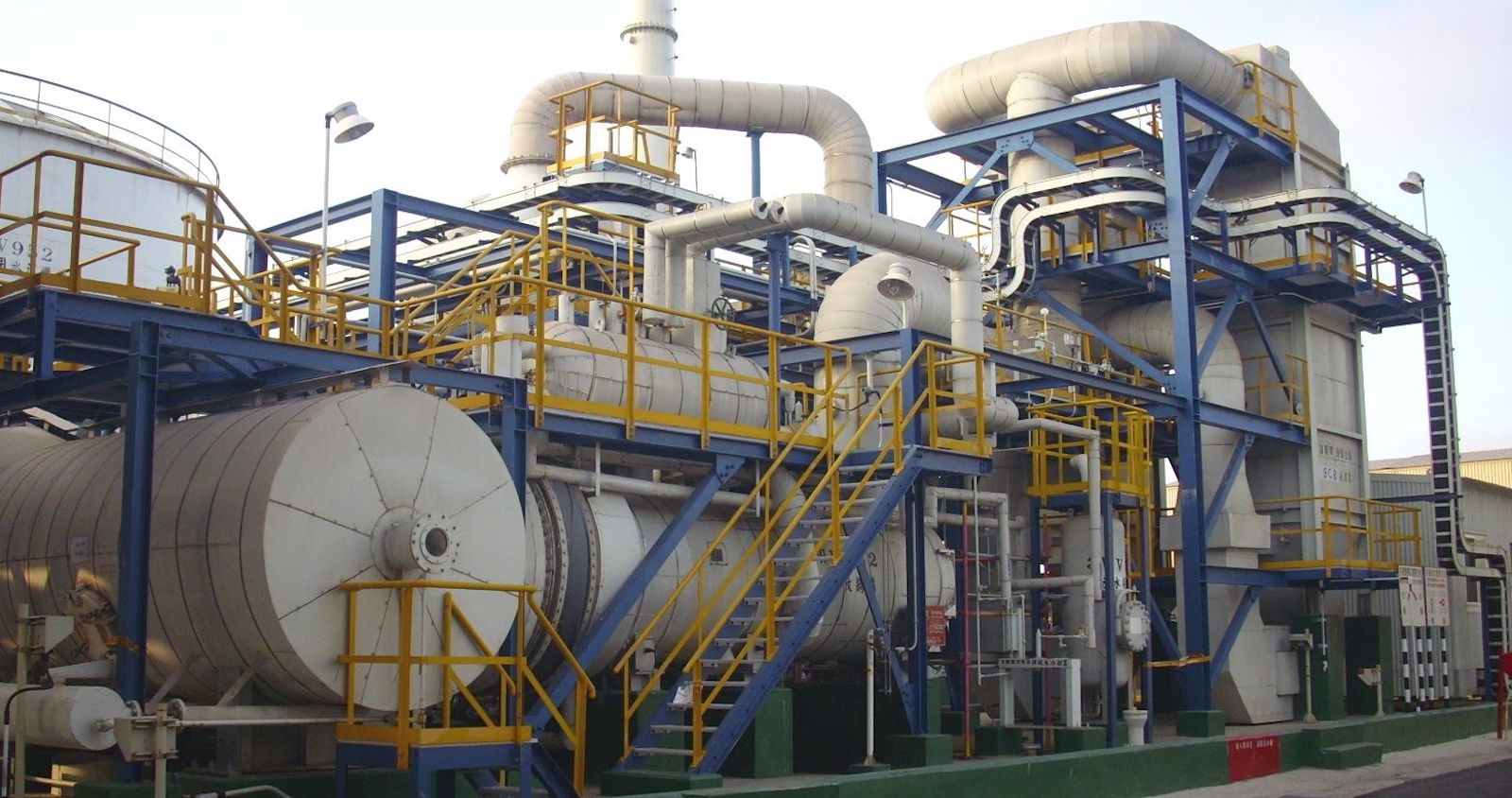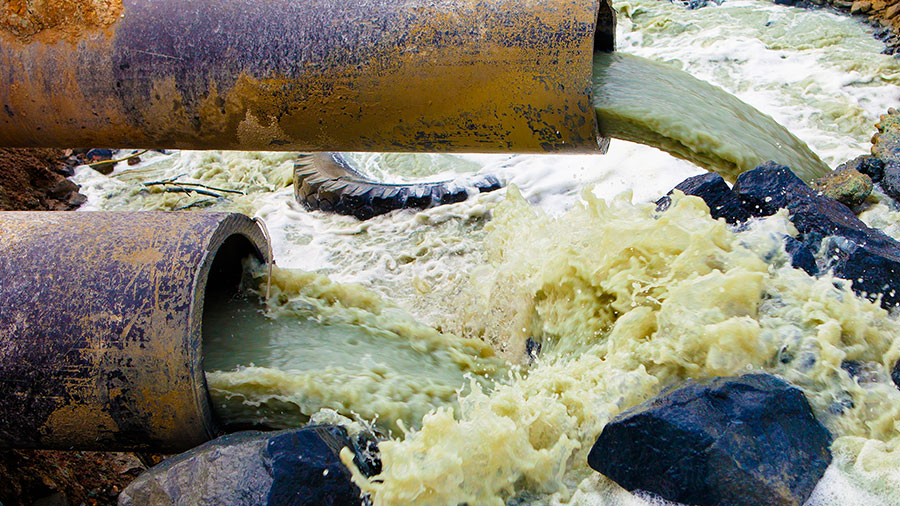Industrial Wastewater Treatment: Advanced Methods for Effective Management
Wiki Article
How Liquid Garbage Disposal Works: A Comprehensive Review of Strategies and Technologies Used

Introduction of Fluid Waste Kind
The complexity of fluid waste types requires a comprehensive understanding of their attributes and ramifications for disposal. Fluid waste can generally be classified into several types, including industrial, municipal, agricultural, and contaminated materials. Each category shows distinct residential properties, calling for certain administration techniques to reduce ecological and health and wellness risks.
Industrial fluid waste stems from producing processes and frequently contains a series of impurities, such as heavy metals, solvents, and natural substances. Community fluid waste, mostly making up wastewater from households and business facilities, consists of raw material, nutrients, and pathogens (industrial wastewater treatment). Agricultural fluid waste, including overflow from farms, might consist of fertilizers, pesticides, and animal waste, positioning threats to water high quality and ecological communities
Unsafe fluid waste is characterized by its poisoning, reactivity, or possible to cause harm. This classification includes compounds like acids, bases, and certain chemicals that require rigorous handling and disposal methods. Understanding these varied liquid waste kinds is important for creating efficient disposal approaches and making sure compliance with environmental guidelines. Appropriate category and characterization are vital for applying suitable therapy strategies and lessening the adverse influence on public wellness and the environment.
Physical Treatment Techniques

Screening is the first action, where larger bits and debris are removed from the fluid waste utilizing screens or grates. In sedimentation containers, much heavier fragments clear up at the bottom, creating a sludge layer, while the cleared up liquid can be more dealt with.
Filtration is an additional crucial technique that involves passing the fluid via porous products, such as sand or membranes, to record smaller sized bits. This step improves the quality of the fluid, making it suitable for succeeding treatment processes.

Chemical Therapy Methods
Chemical therapy strategies are essential for properly managing liquid waste, especially in addressing liquified and colloidal impurities that physical techniques might not appropriately remove. These strategies utilize different chemical agents to counteract, precipitate, or change hazardous compounds into much less hazardous types.One usual technique is coagulation and flocculation, where chemicals such as alum or ferric chloride are contributed to promote the aggregation of put on hold fragments. This process boosts sedimentation, permitting much easier elimination of the resulting sludge. Additionally, oxidation processes, using agents like chlorine or ozone, are utilized to damage down intricate natural compounds and pathogens, rendering the waste much safer for discharge or more therapy.
Neutralization is another crucial method, which changes the pH of acidic or alkaline waste streams to neutral degrees, preventing potential damage to downstream systems and the atmosphere. In addition, progressed oxidation procedures (AOPs) make use of mixes of oxidants and ultraviolet light to degrade persistent pollutants, achieving a higher level of treatment efficiency.
Biological Treatment Processes
Biological therapy procedures play an important function in the administration of liquid waste by using bacteria to break down raw material and decrease contaminant levels. These procedures can be generally classified right into anaerobic and cardiovascular treatments, each employing specific microbial neighborhoods to achieve efficient waste destruction.Cardio treatment entails using oxygen to assist in the malfunction of natural products by germs. This procedure is commonly applied in triggered sludge systems, where aeration storage tanks offer a conducive atmosphere for microbial development, leading to the oxidation of organic pollutants. The resultant biomass can be divided from dealt with effluent with sedimentation.
In contrast, anaerobic therapy happens in the absence of oxygen, counting on various germs to break down natural matter. This method is specifically helpful for high-strength waste, as it produces biogas, a renewable resource source, while lowering sludge production. Technologies such as anaerobic digesters are regularly utilized in industrial and metropolitan applications.
Both anaerobic and cardio biological therapies not only minimize the ecological impact of fluid waste but likewise facilitate source recuperation, making them crucial elements of lasting waste management methods. Their efficiency, efficiency, and flexibility sustain their extensive application throughout different markets.
Arising Technologies in Disposal
Innovative techniques to fluid garbage disposal are swiftly progressing, driven by advancements in technology and a boosting focus on sustainability. Amongst these arising technologies, membrane bioreactors (MBRs) have actually gotten grip for their capacity to integrate biological treatment with membrane layer purification, resulting in premium effluent that can be reused in numerous applications. MBRs enable smaller impacts and more effective procedures contrasted to conventional systems.Another promising development is making use of anaerobic digestion integrated with nutrient healing technologies, which not only treats liquid waste but also generates biogas and recovers beneficial nutrients like nitrogen and phosphorus. This dual benefit boosts source performance click over here and minimizes ecological impact.
Additionally, advanced oxidation procedures (AOPs) are being taken on for the deterioration of complex organic toxins. These approaches use powerful oxidants and catalysts to damage down pollutants at the molecular level, offering a highly reliable option for challenging waste streams.
Moreover, the assimilation of expert system and equipment learning in waste monitoring systems is enhancing operational performance and predictive maintenance, bring about minimized costs and boosted environmental conformity. These innovations show a substantial shift in the direction of even more efficient and lasting liquid garbage disposal methods.
Conclusion
Finally, effective fluid waste disposal demands a detailed understanding of various strategies and technologies. The assimilation of physical, chemical, and biological therapy methods find out makes sure the efficient monitoring of varied waste types. Moreover, the emergence of ingenious modern technologies improves therapy effectiveness and promotes sustainability in waste monitoring techniques. By continuously progressing these methodologies, it ends up being possible to deal with the expanding obstacles linked with liquid waste, inevitably contributing to environmental protection and resource recuperation.Liquid waste disposal is a critical aspect of environmental administration, needing a detailed understanding of numerous techniques and modern technologies tailored to different waste kinds. Fluid waste can broadly look at this site be classified right into numerous kinds, consisting of commercial, local, farming, and dangerous waste. Agricultural fluid waste, consisting of overflow from farms, may consist of fertilizers, pesticides, and animal waste, positioning risks to water quality and communities.
Various physical treatment approaches play a crucial function in managing fluid waste effectively - industrial wastewater treatment.In verdict, reliable liquid waste disposal requires an extensive understanding of various strategies and modern technologies
Report this wiki page